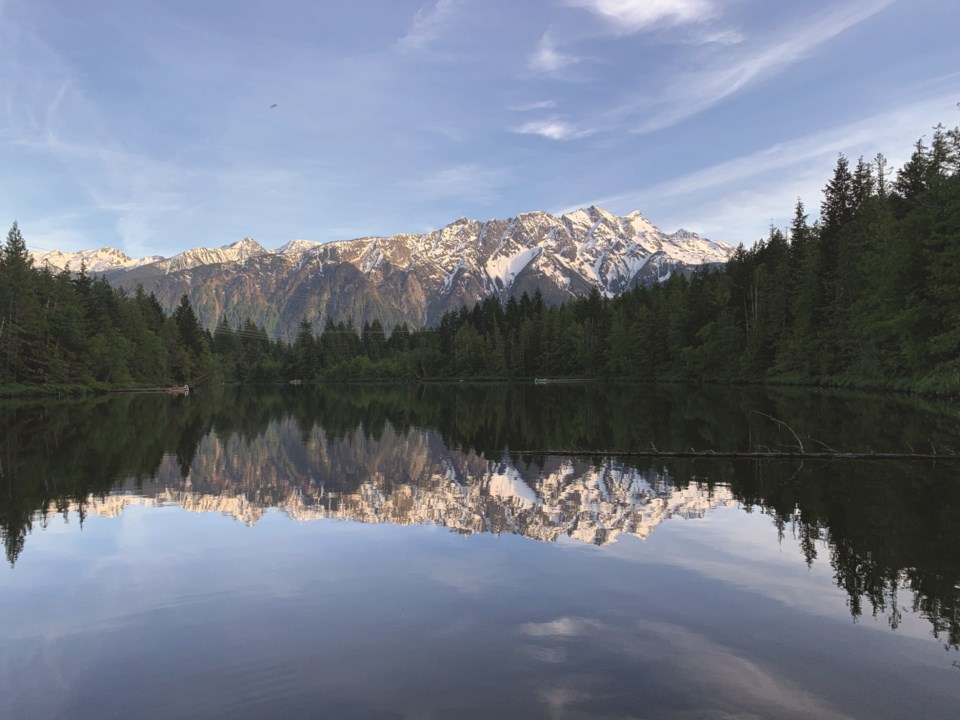An investigation into water quality in the Village of Pemberton’s (VOP) wells has revealed manganese and iron levels that exceed the new standards set by the Canadian government in 2019.
The elevated levels were first discussed at the Pemberton council table in June 2021. While they aren’t something to be alarmed about, according to the VOP’s manager of operations and projects Tom Csima, plans are in the works for a new water treatment plant that would bring the levels back to normal range through filtration and oxidation of chlorine injection into the water.
“The idea with this was that if we have a treatment facility that can remove manganese and iron, and we’ve specified this with our consultants, that potentially we could look at a new source [of water],” said Csima at the Jan. 18 Committee of the Whole (COW) meeting.
With a new facility, the VOP could potentially draw water from the Lillooet River aquifer, which has never been an option before due to its even higher manganese and iron levels.
“We know that the Lillooet River aquifer is quite plentiful. The issue is mainly that it’s poor quality. So potentially, we could use this treatment facility to treat a new source. We will consider potential other sources down the road, but it would definitely widen our horizons on what new sources we could tap into.”
The proposed water treatment plant would cost somewhere in the range of $7.9 to $8.2 million dollars, with a 40-per-cent contingency added for unforeseen costs.
However, the VOP may not be on the hook for the full cost, as Csima’s report to the COW also sought approval to apply for the Canada Infrastructure Program’s Green Infrastructure Stream Grant, which would cover 73.33 per cent of the cost.
If successful, the grant would reduce the VOP’s costs for the project to $2.1 million dollars.
According to Csima, the village’s water can still be distributed safely to the public in the meantime, and while there are no concerns about health problems with the manganese and iron levels, the deterioration of the village’s backup well has put more urgency on the need for a new water treatment plant.
“Two years ago, we were looking for a fourth well within that aquifer, thinking that it will be good to have a backup, just in case something happens say with the pump that prevents us from using that primary well, but we were futile in that search,” said Csima.
“But essentially, I think that regardless of the future source [of water], we will still need this source, and this issue could become very urgent. So I think that it’s something that we’re kind of looking at as a ‘right now’ need … but we have enough time to plan it properly and execute it, and also seek funding that is available.”
The plan is to build the new water treatment plant in one of two locations, both of which are near the current reservoir located in the northwestern corner of Pemberton.
The first proposed location is to have the plant elevated above the reservoir on the north side. This location would add the benefit of having water gravity fed to the reservoir, however, the downside is it would probably require the current pumps to be upgraded.
The second proposed location, and the one most likely to be used, according to Csima, is on the reservoir’s southeast bank, because the space is already available.
If the VOP were to build the new plant on the north side of the reservoir, adjustments would have to be made to the Benchlands Neighbourhood Concept Plan, which currently has townhouses planned for development in the same location.
The request to prepare an application for the Green Infrastructure grant—due on Jan. 26—as well as to prepare an official authorization to be submitted to council at the Feb. 1 meeting were ultimately approved by the committee.
The VOP has been contending with low pH levels in its drinking water for years, and started adding sodium carbonate (or soda ash) to the water to increase pH levels after testing in 2016 showed elevated levels of lead.
Water with low pH levels is corrosive, and can result in increased levels of lead in drinking water from interactions with pipes and certain plumbing fixtures.
Find the full report and a video of the meeting at pemberton.ca.




